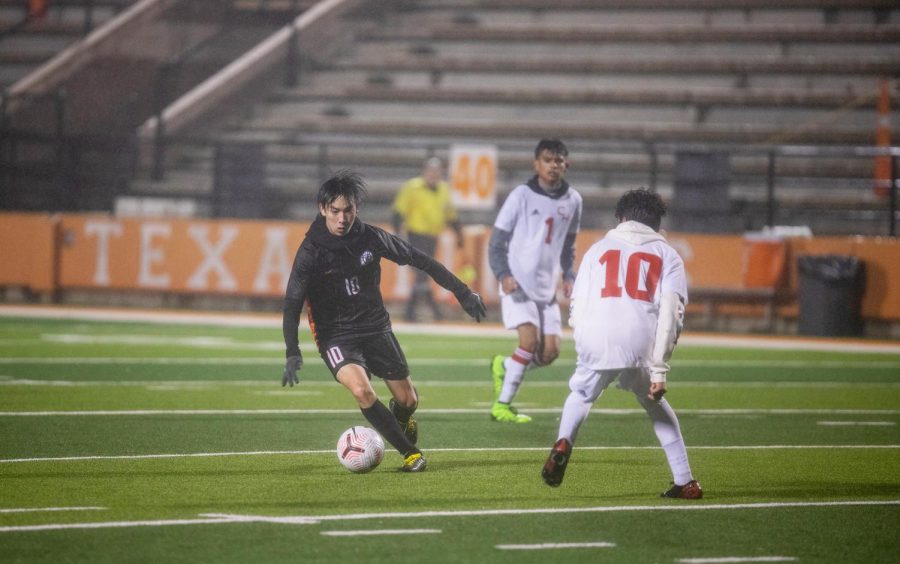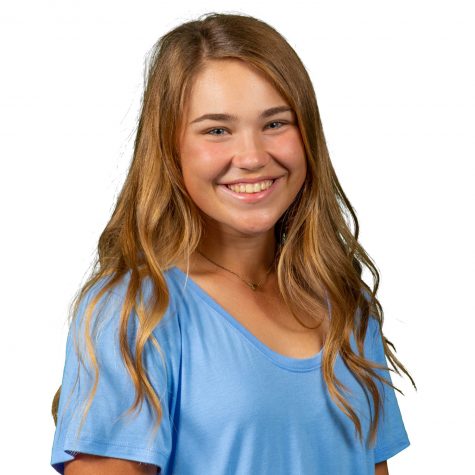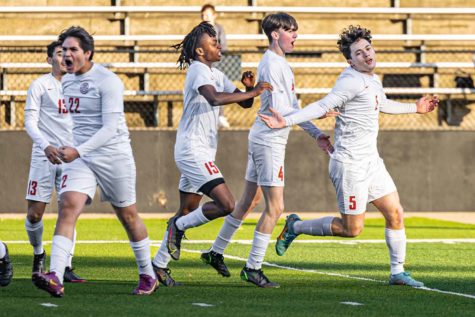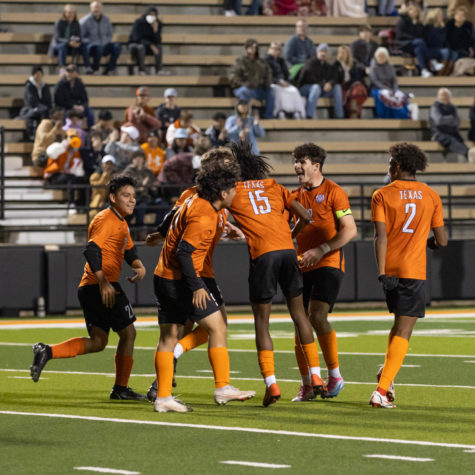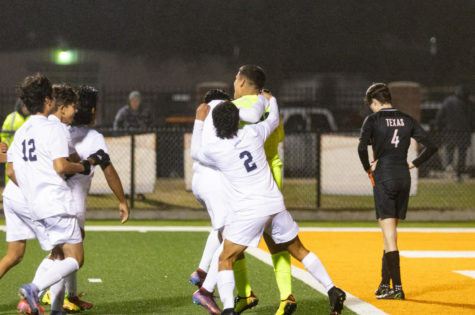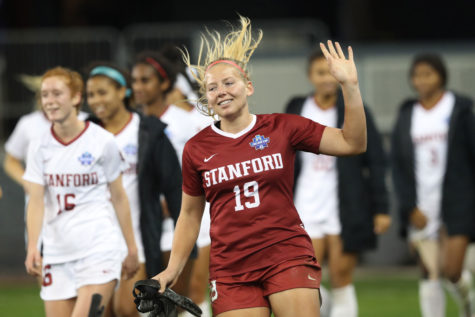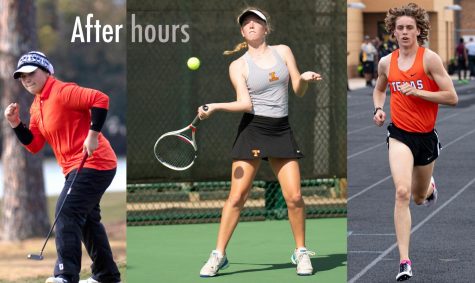Frosty on the field
Soccer team endures frigid temperatures
Sophomore Reece Gaylor kicks the ball away from an opposing player. Soccer players usually find themselves competing in harsh weather conditions.
March 5, 2021
With the season starting in mid-December and lasting through April, an argument can be made that the soccer team endures some of the worst weather. The players have endured rain, cold, sleet and sometimes even snow while competing.
“The varsity team played a tournament in Pine Tree last year, and it snowed a couple inches,” sophomore Braden McKinnon. “It was one of the coldest games we’ve played in.”
Despite the grueling weather, the players wear minimal thermal gear. Field players can’t bundle up because they need to be able to run freely, but junior Logan Pilgreen, the varsity goalie, wears pants when competing because she doesn’t have to run as much as the other positions.
“Field players have tights that they wear under their shorts,” Pilgreen said. “We all have undershirts, but I’m in pants whenever it’s super cold.”
When not on the field, the players are given jackets to keep them warm on the bench. They allow the players to stay loose, even when not playing.
“When we’re on the bench, Coach [De Leon] gives us these stadium jackets for us to keep warm before we go on the field,” sophomore Daniel Lee said.
This 30 degree weather affects the players more than one would think, tightening up their muscles despite the constant movement.
“[The cold] breaks your body down really bad,” Pilgreen said. “You get tired quicker. From my personal experience, my back starts to hurt and my legs lock up. Whenever I go to hit a ball, you can just feel your whole opposite side lock up.”
The players have to constantly remember to stay active in the frigid weather so they don’t get stiff.
“I stay moving a lot back there,” Pilgreen said. “I’m always jumping around and stretching.”
Not only does the cold affect the players, it also affects strategy. To keep the wind from blowing the ball, the goalie keeps the ball lower to the ground when kicking down the field.
“It gets cold sometimes [and] the wind blows different ways,” Pilgreen said. “It affects where we move the ball how I move the ball. It needs to stay lower to the ground. It changes the way the ball moves especially for me out of the back like if I’m hitting long balls or I have to play more out of the back just because I can’t hit that ball as far.”
The cold makes the soccer ball more difficult to hit because of pressure. The players notice there is a difference in how the ball feels in the cold as opposed to when they play in warmer weather.
“The ball flies better [in warmer weather],” McKinnon said. “Boyle’s law says when temperature changes, pressure changes. It’s an inverse relationship so when the temperature goes down the ball pressure goes down, which makes the ball flatter, and it’s harder to kick.”
Some players attribute better playing in the cold to having to practice in, sometimes, even colder temperatures. They explained that they get used to it after a while, and it ends up not bothering them as much.
“I did practice with the boys first semester after volleyball season, and it did help me. In the morning, we get there at seven and it’d be 23 or 24 degrees, so you were freezing your tail off,” Pilgreen said. “Your body eventually equips it.”
Other players, however, can’t ever get used to the low temperatures. How one adapts in the cold is different for each and every player.
“Cold morning practices may make it easier for some people to adapt to cold game settings, but not for me because I just don’t like the cold,” McKinnon said. “You’re just cold before, you’re cold after, you’re just always cold.
I think the bad weather is one of the biggest factors in why people don’t come watch us play,” McKinnon said. “It really sucks because we play so much better with a crowd. The best game we played this year was because the crowd was hyping us up. — Braden Mckinnon
Beyond affecting the players physically and in strategy, the weather makes watching the games less appealing to spectators. Some just aren’t willing to endure the chill to watch the team compete.
“I think the bad weather is one of the biggest factors in why people don’t come watch us play,” McKinnon said. “It really sucks because we play so much better with a crowd. The best game we played this year was because the crowd was hyping us up.”
Even though the weather is not always ideal, the team plays as one. They have learned to adapt and compete well.
“We got really good at connecting passes. Running gets tiring more quickly in the cold, so we start letting the ball do all the work and have a lot of good passing strings,” McKinnon said. “No matter what team we’ll go against, we will probably beat them in possession. We may lose the game but we will have more possession.”
With only a couple games left in the season, the team is optimistic about the remaining competition. They have set their sights on a tournament that could get them into the fourth place spot in the playoffs.
“We won’t make the playoffs as a third spot now so at this point we’re just preparing for the tournament,” McKinnon said. There is a fourth place tournament that they started this year because of COVID, in case any team gets quarantined. So, it’s the fourth place tournament winner that makes the playoffs.”


